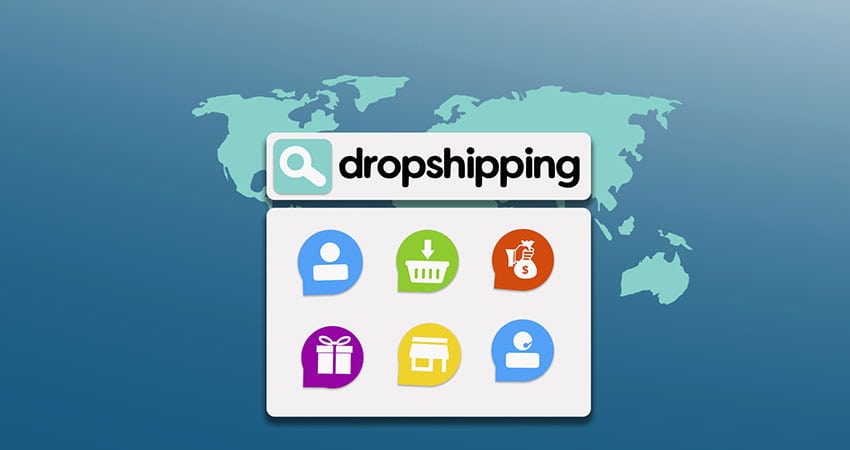Offering merchandise from drop shipping vendors has greatly extended the assortment of thousands of ecommerce and omnichannel brands, with many of them 100% drop shipping. The challenge is to maintain high customer service standards and vendor compliance.
Recently we mystery shopped two of America’s largest merchants. This experience illustrates key customer service criteria you need to consider in using drop shipping.
Two Shopping Experiences
Company A: a mega retailer with catalogs, ecommerce and dozens of stores
Contact Center Order: Merchandise in stock arrives in 2-5 business days. The order weighed 24 lbs. and arrived in good condition in four days. The company offers free shipping when using the merchant’s branded credit card.
Easy Returns: Refunds are offered within 12 months if not 100% satisfied; longer if the item is defective. They are sent back to the merchant, not the drop shipper, via UPS (drop box, store, to UPS driver, to a store). The UPS tracking number is printed on the order and on the peel-off label. The return label allows quick sort on dock, and quick online access to the order history.
The company charges a flat rate of $6.50 if using the return label – a good deal for heavy products. Returns are free for customers with the branded credit card.
Questionable practice: The price tag of $119 was sealed outside the carton; there was no price on the invoice.
Company B: a mega ecommerce company
Website order: We ordered two “specials of the day.” Three products retailed for $33 plus $8.50 for shipping. The merchant has a full-function, easy-to-use mobile app for ordering, FAQs and tracking your package.
The products were coming from two different manufacturers and consolidated in the merchant’s DC, arriving in 8-12 days. Five days after the order placement we received an email and shipping confirmation for the first carton (domestic UPS). A second carton would come internationally but we didn’t get a delivery date. It arrived from China in 14 days (retail price: $15).
Returns: The returns section on the website is extensive. The product copy explains when an item is “eligible to be return” (sic). Specifically excluded are heavy and bulky items and electronics, the latter often a high return category, often 25% to 30% of purchases. If that’s the case, why carry these? Return requests must be approved within 30 days, and prepaid shipping labels must be returned within 10 days. Customers are credited for returns of up to five items, less $8.95 return shipping.
The Downside: With consumers’ same-day shipping expectations, is losing time consolidating orders rather than in-house fulfillment or drop shipping a best practice? The returns process is restrictive and makes us wary of ordering any products we don’t want returned. On low average order values, with these steps and an international shipment, do they lose or make money?
Assessing Your Drop Shipping Process
While these are only two shopping experiences, they give us two widely different approaches which are helpful in evaluating your company’s drop shipping operations. Here are some key factors to consider:
Customer Service Level: Drop shipping puts the vendors in charge of your service. The more vendors you use, the more points of control you need to maintain to keep service levels up. Some points to consider:
- Shop your vendors: What mystery shopping are you doing to monitor them periodically?
- Inventory availability: Are you guaranteed stock and shipping timeframes? Or are you shipping from a common stock for all merchants using the drop shipper? Are there unknown stock outages?
- Shipment arrival date: Does your website and customer service tell the customer a realistic arrival date since it’s vendor shipped? Or is the date communicated after shipping?
Compliance: What standards do your vendor compliance manuals communicate? They should include order cycle time; shipping carrier; placement of labels and order documents; tensile strength of cartons; outer carton labeling, etc.
Process: Does it need to be streamlined? What are your internal and drop shipping costs? With multiple drop shipped items on a single customer order, are you losing money?
System: Have you invested in a system that allows you to:
- Transmit customer orders to the vendors
- Track when they print and confirm shipment to customers
- Transmit shipment confirmations to your customer service files
- Generate management reports that help with vendor compliance
- Give you data to determine S&H costs and service levels
For volume drop shipping, we believe these types of systems are essential.
Returns: How easy is your returns process? Does it inhibit sales?
Leveraging drop shipping vendors can greatly extend your merchandise assortment. The key is to maintain the same high standards for drop shipping as you have for your internal fulfillment operations.
Brian Barry is President of F. Curtis Barry & Company

